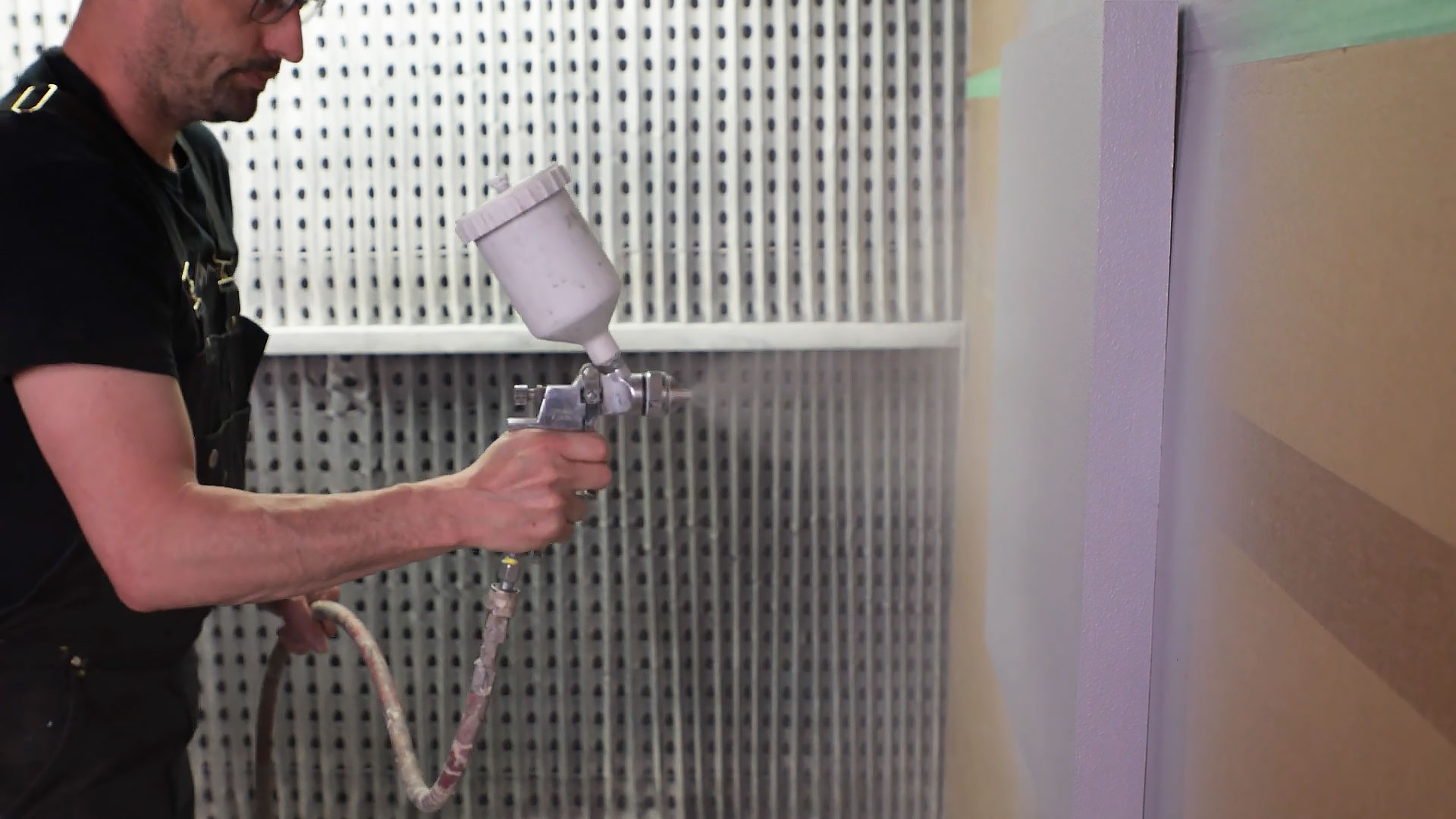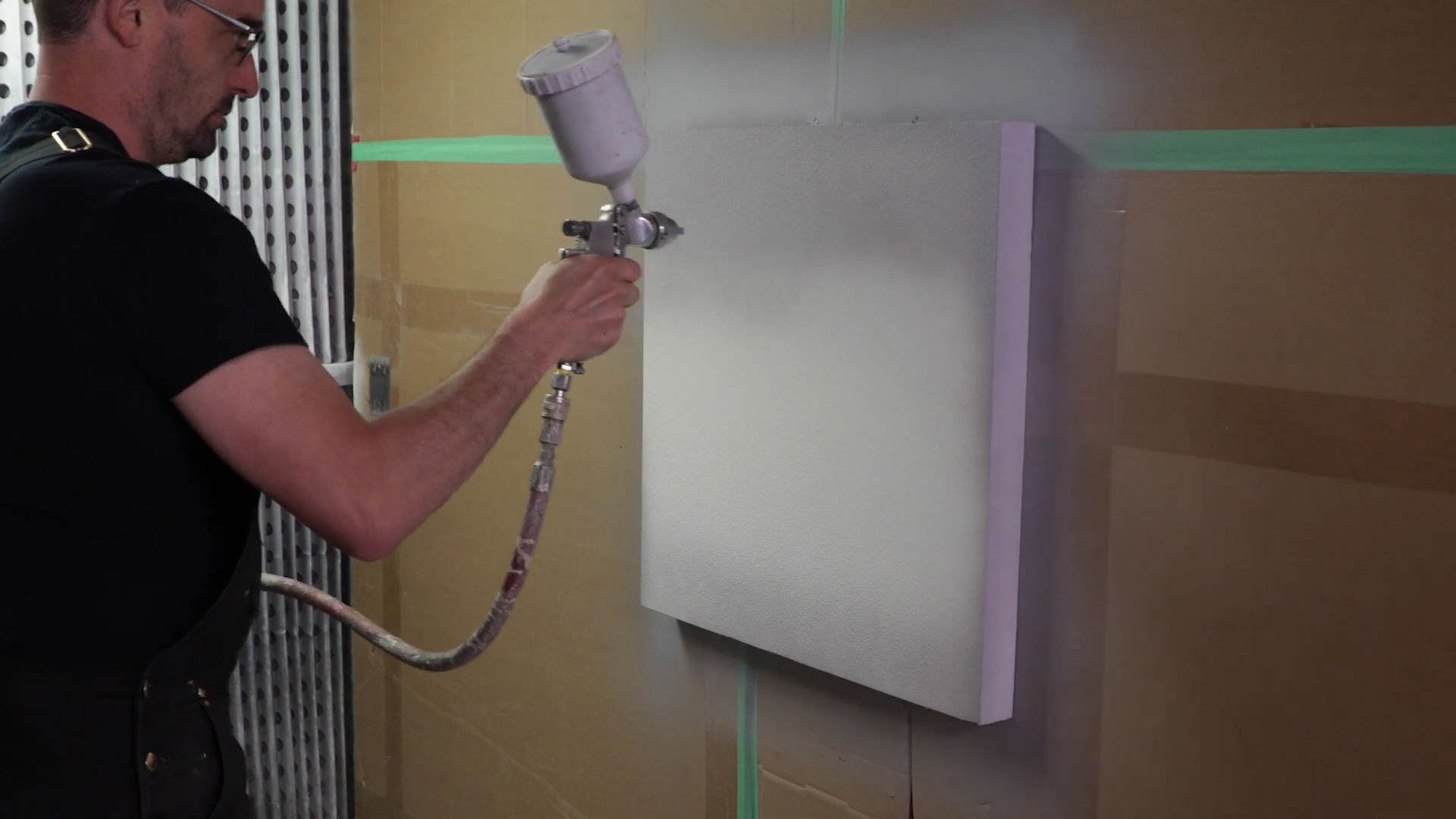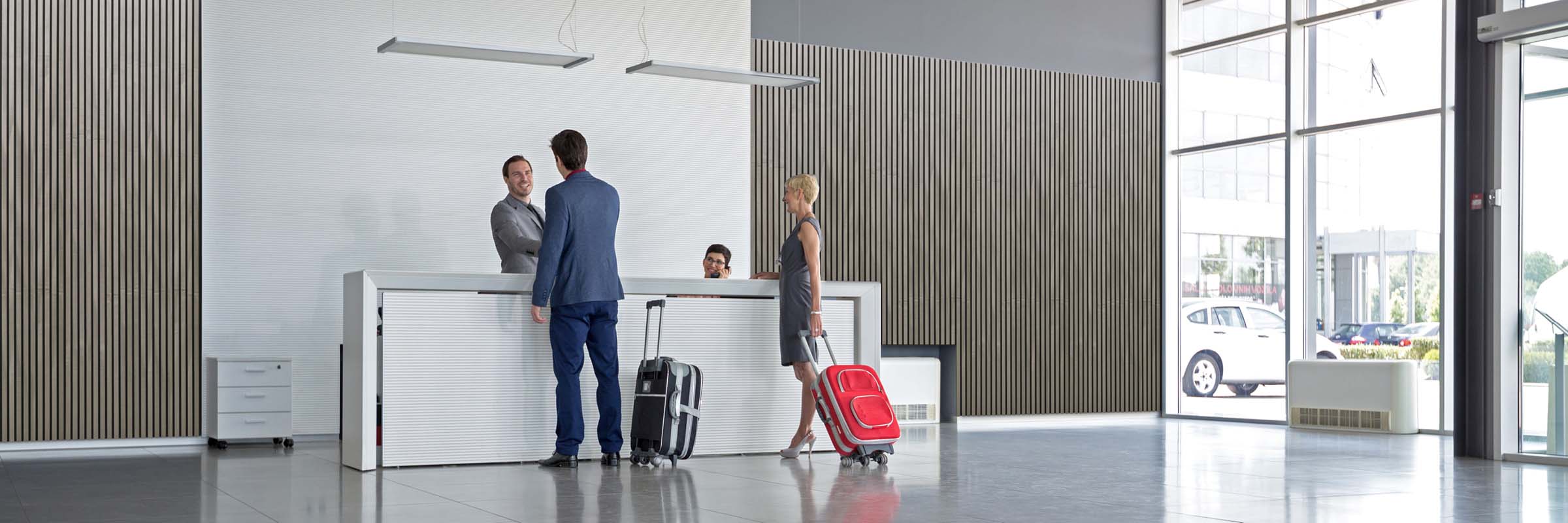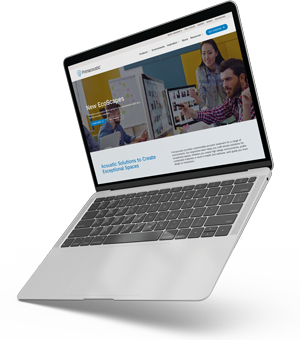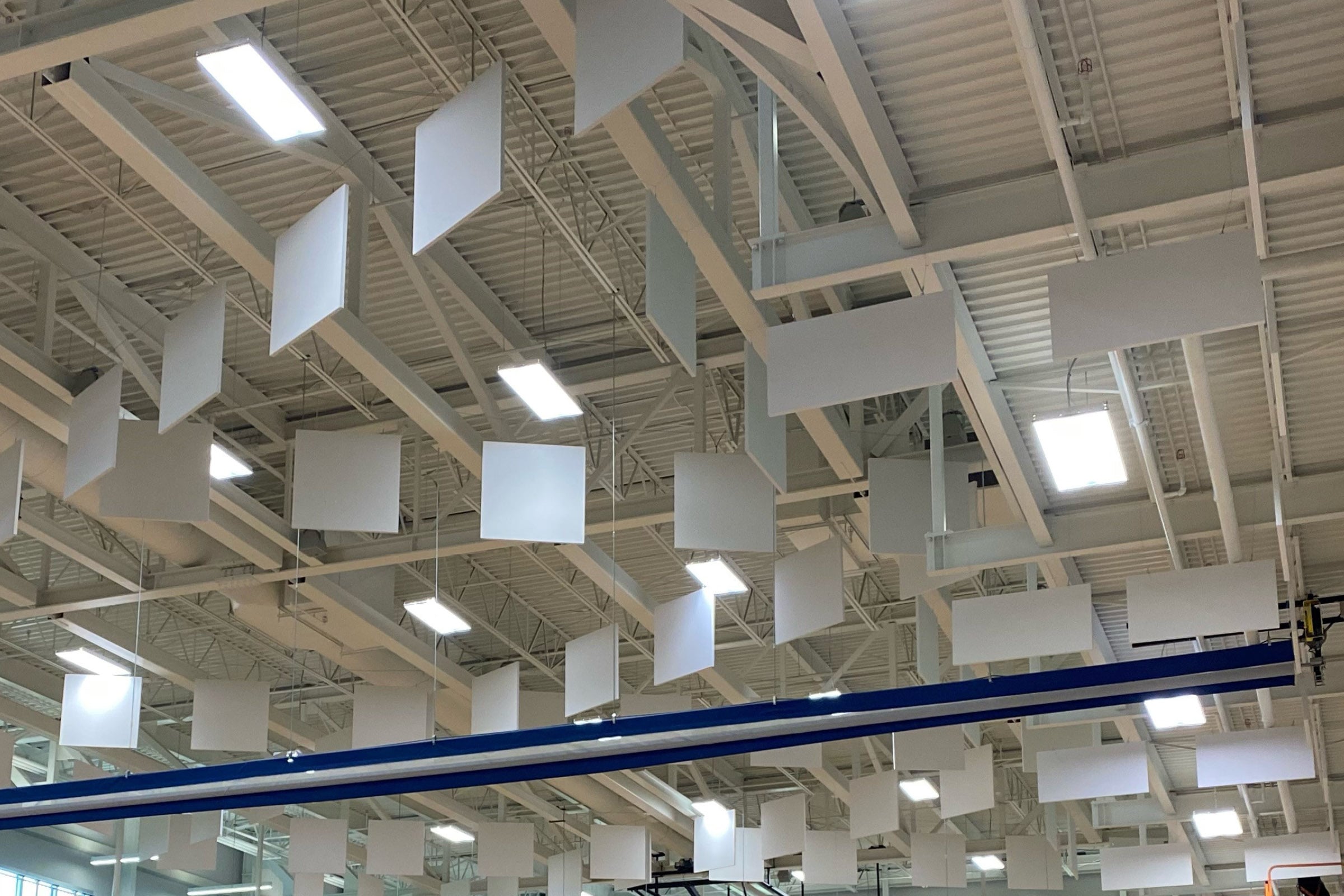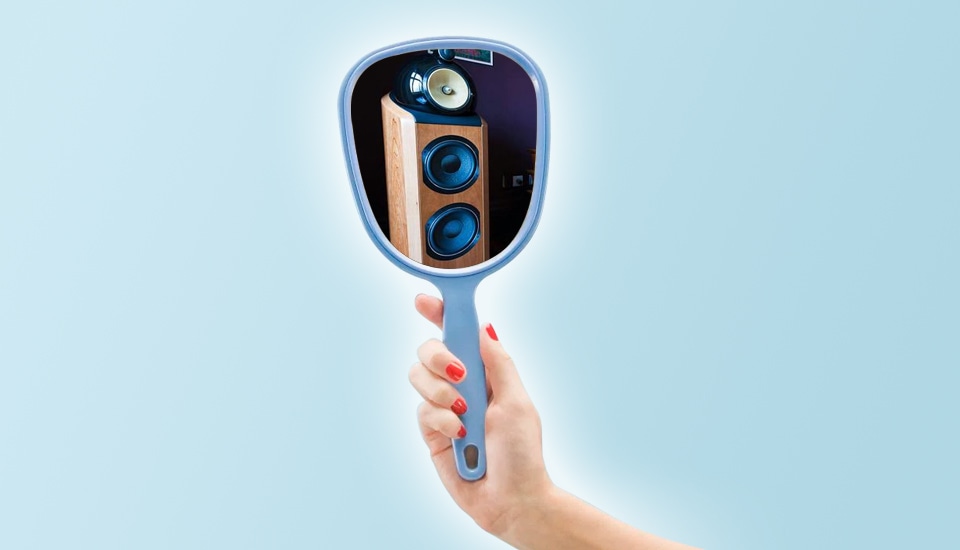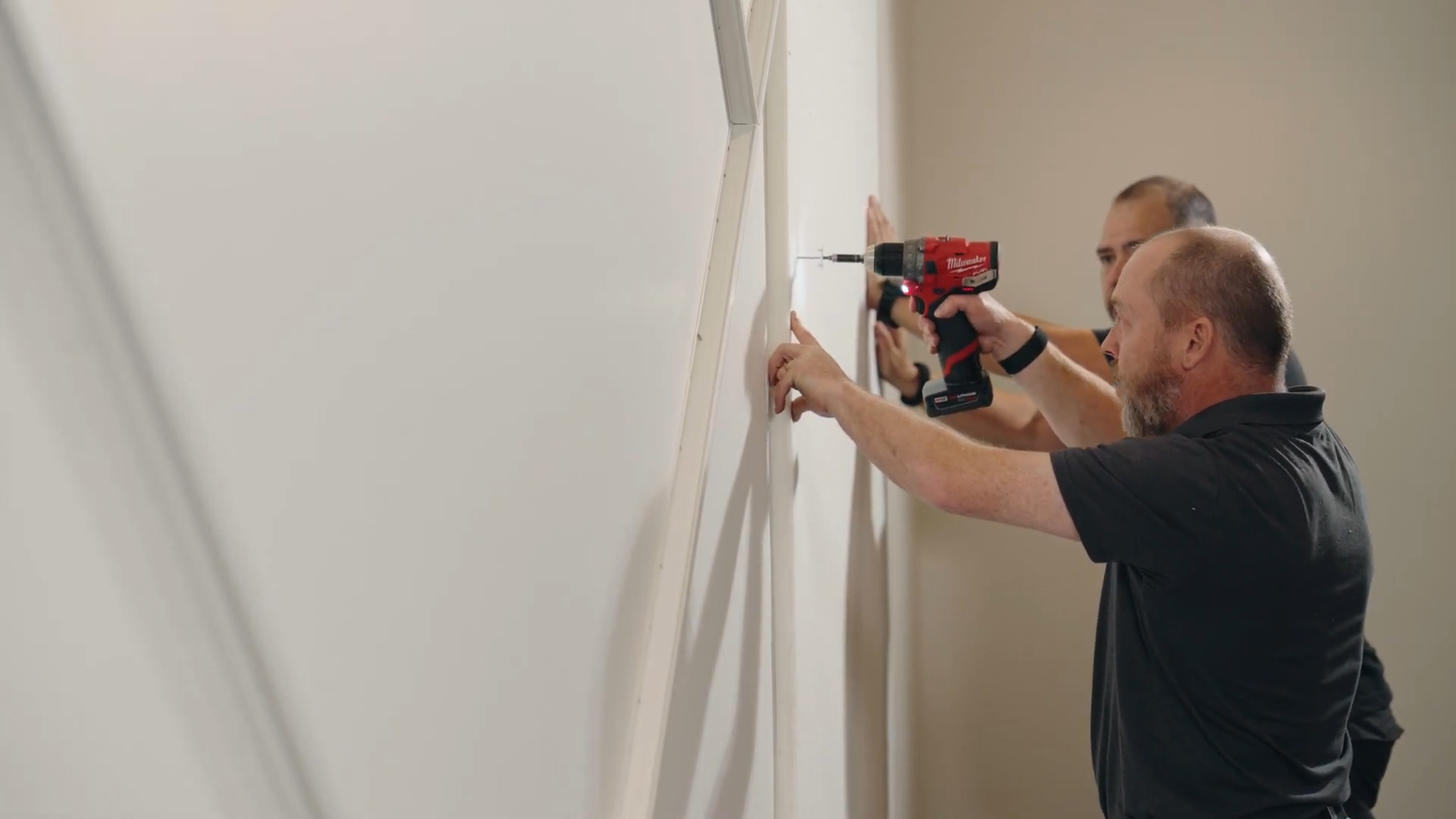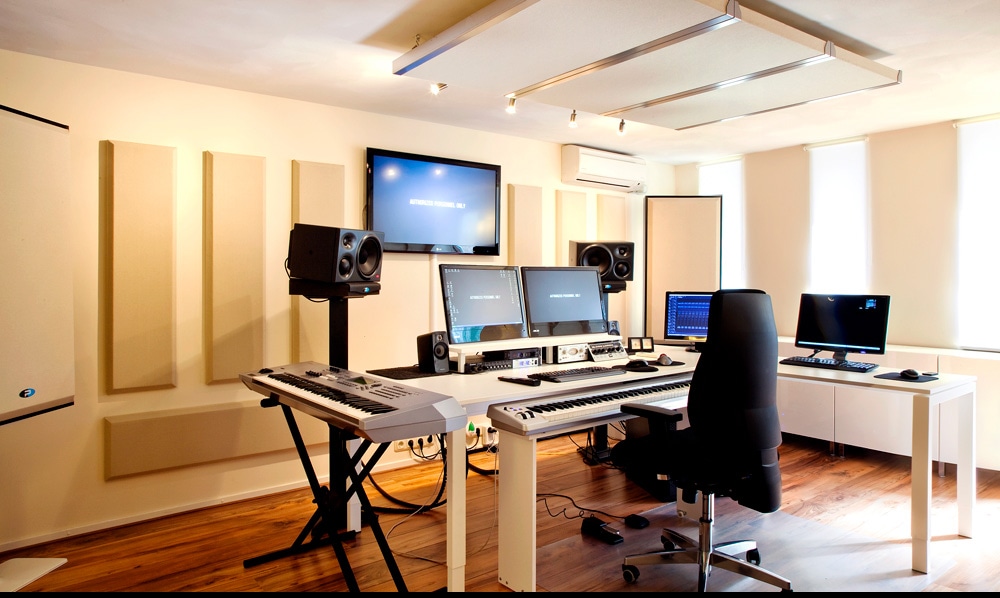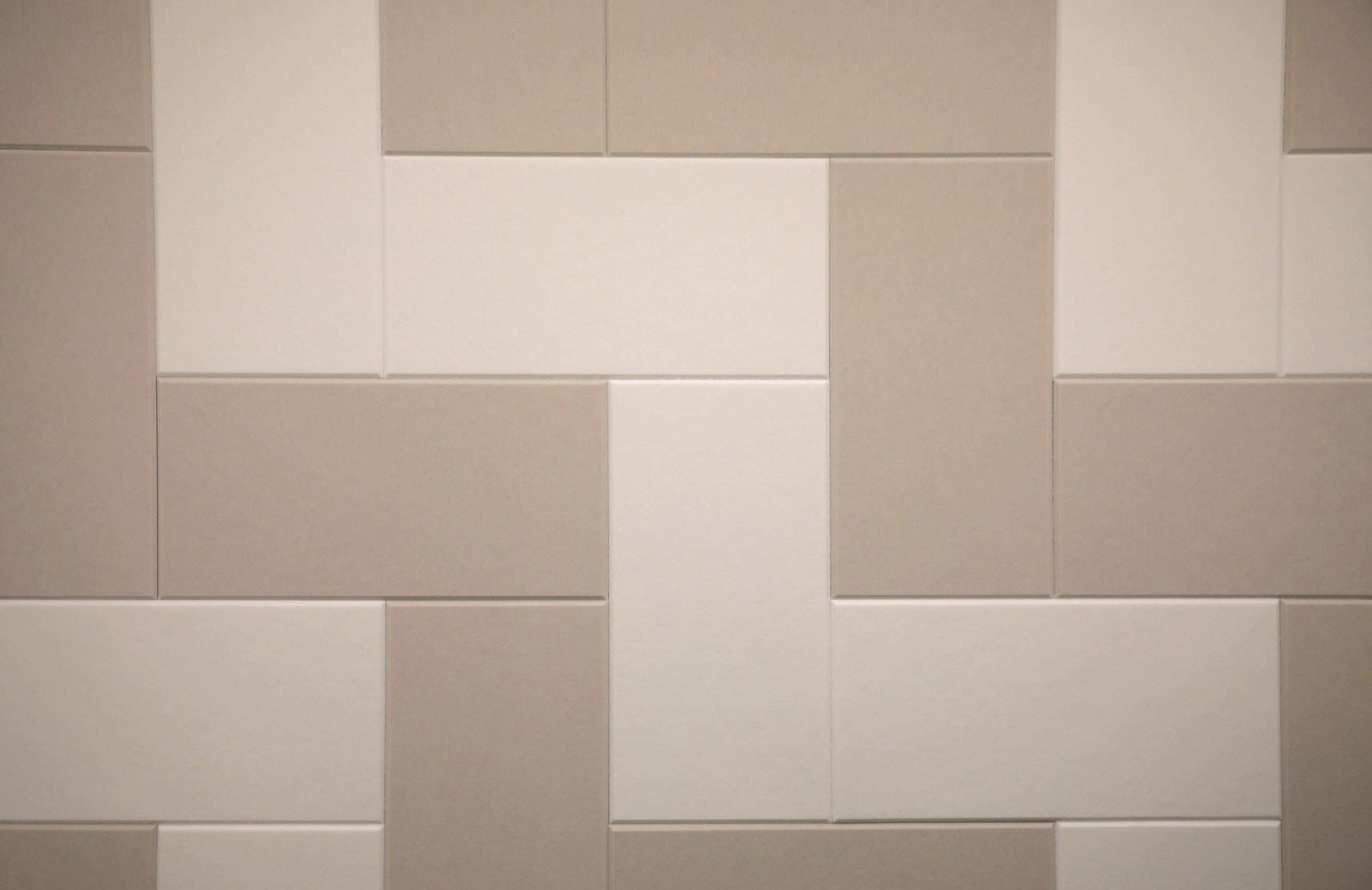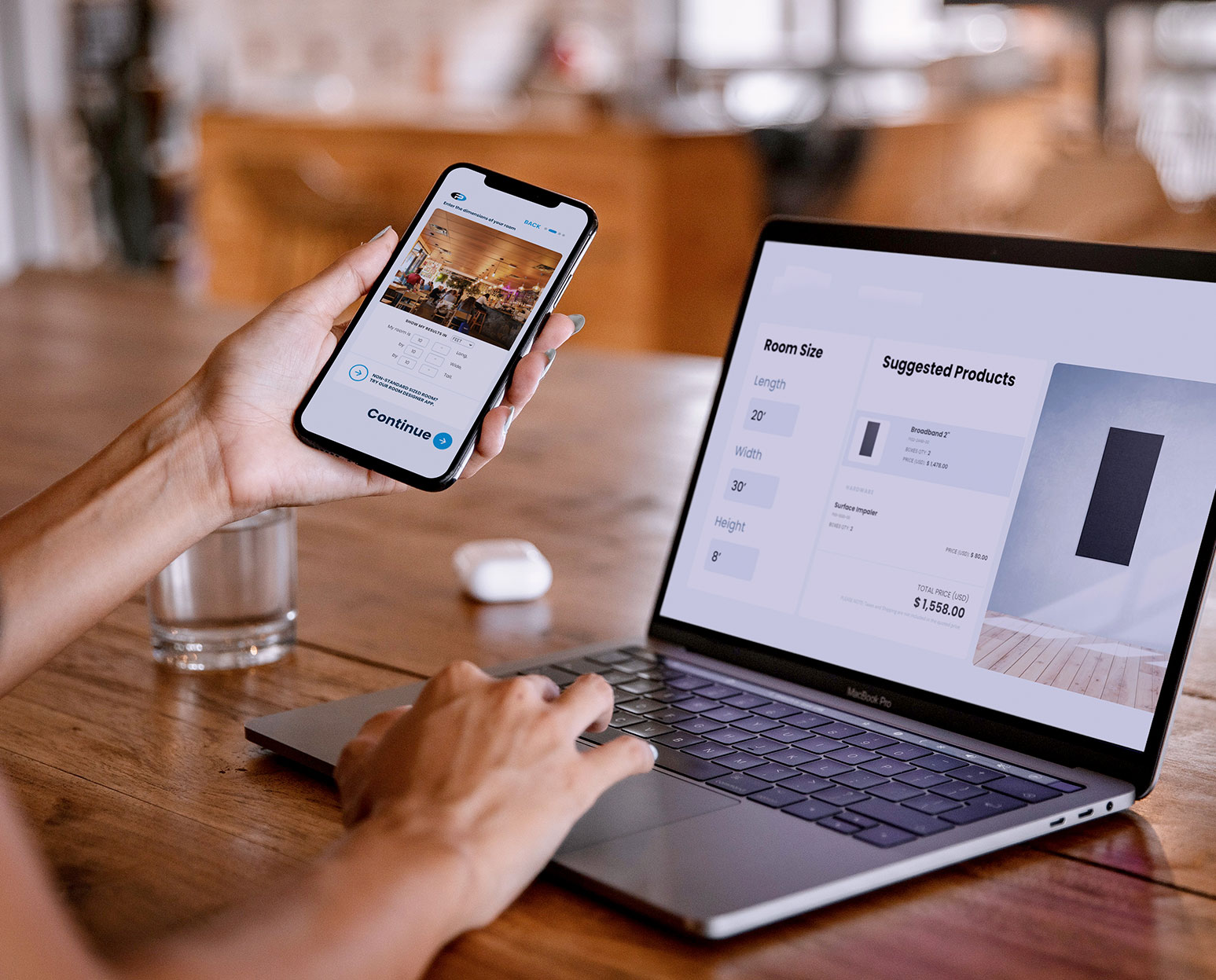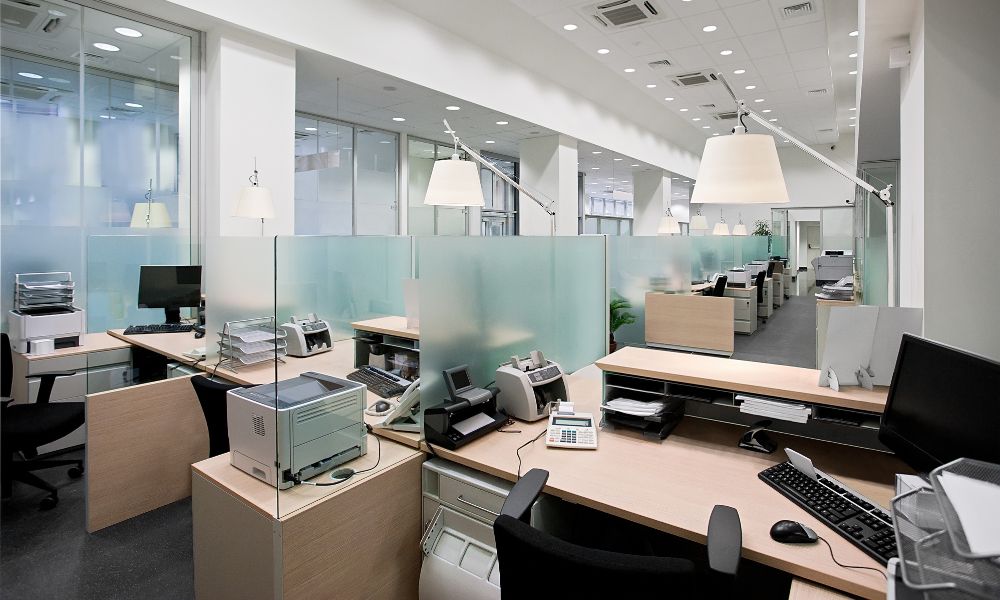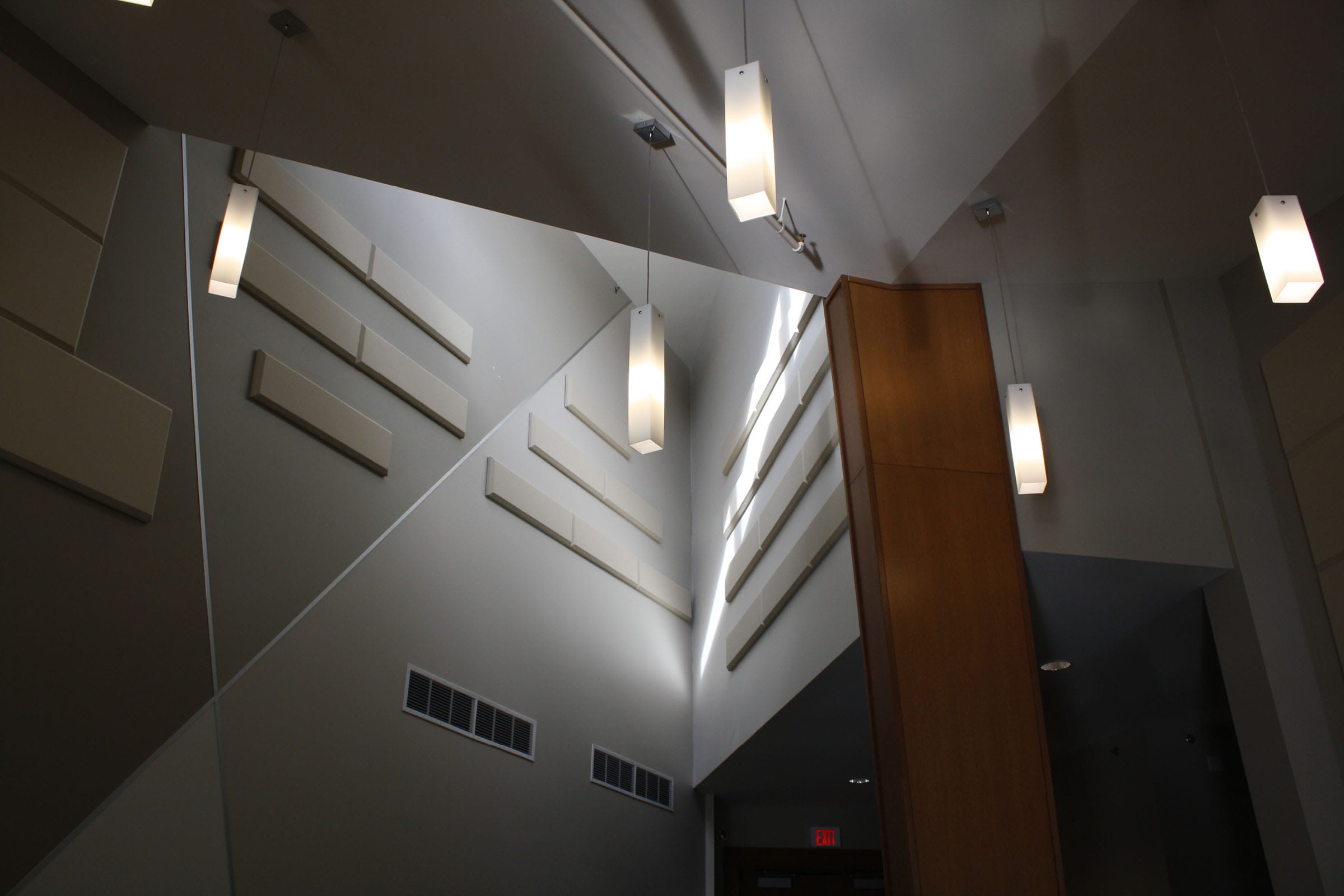Paint Type
Primacoustic Paintables is a range of acoustic panels with a specialized finish that allows for painting or printing onto the surface. Click here learn more about Primacoustic Paintables. You can even print onto Primacoustic Paintables, check out our guide for How to Print for requirements and specifications.
Any latex paint can be used, however, the sheen of the paint will greatly affect the absorption properties of the panels. Primacoustic recommends no greater sheen than eggshell and the thinnest coating of paint possible should be used in order for the panels to remain as acoustically effective as possible.
With computerized colour matching systems now available, it is recommended that a sample of the panel to be colour matched be taken to the paint store.
Spray Painting Method-Recommended
When painting acoustical materials, the painter should be very careful that he does not close up the acoustical surfaces, perforations and fissures. It is through these openings in the surface that sound waves enter the body of the acoustical material and are absorbed. Care should be taken that these perforations are not clogged. At minimum, painting will result in a .05 to .10 reduction in NRC.
Testing was done with a 3.5hp compressor and consumer sprayer. A dedicated paint sprayer is recommended and is available at most rent-it centres. It is likely that the paint will be too thick for even spraying when using consumer compressor/sprayers. Follow the paint manufacturer’s recommendations for thinning paint.
When spray painting, apply the paint with a stream directed perpendicularly to the surface of the material, moving the gun back and forth to get a uniform coating. Under normal conditions, one coat should be sufficient, however, this will vary by colour.
Spray painting will result in a more uniform coating on embossed or irregular surfaces. For best results, panels should be removed from the wall or ceiling, laid flat for painting, and allowed to dry thoroughly while still flat before installation. This method eliminates the costly operations of masking walls and covering furniture.
Method
- In a well-ventilated space, lay panel flat and use air compressor to blow the panels’ surface clean.
- Attach paint sprayer as per sprayer instructions.
- Fill reservoir with pre-thinned paint (suggest ½ cup water to 1 US Gallon Paint).
- Open Paint and Air controls to desired levels (50%/30% suggested starting point) and ensure sprayer is set to handle thick paint
- Turn on compressor and adjust output to desired air pressure (this will depend on the sprayer 60 PSI Starting Point Suggested)
- Test spray on cardboard or other disposable material to ensure paint flow is correct and splatter is minimal. Once desired results have been attained, move to next step.
- Paint the edges first as over spray will occur (edges may be roller painted with minimal acoustical impact). Let dry before proceeding.
- Aim gun 7-9 inches above panel depress trigger moving gun side to side and shoot in 1 second bursts.
- Re spray as needed to achieve desired coverage-several very light coats is better than 1 heavy coat-each coat will effect the acoustical absorption properties of the panel
Roller/Brush Painting Method
If this is the method chosen, (although not recommended) care must be taken to apply the thinnest coating of paint possible in order to preserve the acoustical absorption properties of the panels.
First remove loose dust from the material with a brush or vacuum cleaner attachment. Apply the paint to the surface as one would paint a wall using as little paint as it takes to cover the panel.
Every coat added will impede the acoustic performance of the panel therefore; care must be taken in assessing the finish of the panel.
Printing Graphics on Primacoustic Broadway Paintable Panels
Any image in any file format can be printed onto the Broadway Paintable Panel. Check with your local printer for their preferred format.
As with any graphic printing project, the resolution of the image is crucial to the finished look of the panel. 100 dpi is considered the minimum resolution for an uneven surface.
The panels can be printed on using a flatbed inkjet printer, available at many professional print facilities. The important considerations are that the thickness and size of the panel can be accommodated by the printer.
Important note: Be sure to instruct the printing company not to flood the panel before printing.
Disclaimer
Primacoustic cannot guarantee that the published surface burning characteristics, fire resistance ratings, acoustical performance, dimensional stability/sag, or light reflectance will remain the same after painting.
Primacoustic has designed these panels to be painted and will make recommendations for the type of paint and techniques that may be used. Primacoustic cannot be responsible for the finished appearance of the panel after painting or printing has been done.
